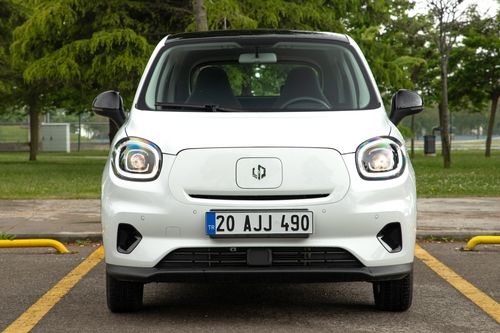How to Transfer Motor Insurance When Buying a Used Vehicle
Written by Upstox Desk
Published on May 27, 2025 | 5 min read

Neha sold her scooter to a friend. She received the payment directly in her bank account and signed a transfer agreement. She thought her part was done and was relaxed, acting in good faith. After six weeks, she received a notice that her scooter was involved in a hit-and-run case. When she checked the Parivahan website, she realised that the insurance and the scooter registration were still under her name. As she relied on her friend, she did not inform the insurance company about the transfer, nor did she cross-check with the regional RTO about the transfer of the vehicle. Her ignorance cost her heavily.
India has one of the largest and most thriving second-hand automobile markets in the world. It is estimated that the market will reach the $73.50 billion mark in 2030, making it one of the fastest-growing sub-sectors. Despite the increase in the popularity of used vehicles, people often make trivial mistakes while transacting. While most buyers focus on checking the registration certificate, service history, and ownership documents, insurance transfer is often overlooked.
Overlooking motor insurance can be a costly mistake, as it may result in claim rejections or third-party liabilities for the new owner if the vehicle registration and insurance names do not match. Simply holding an insurance policy under the previous owner's name doesn't guarantee claim approval or legal protection. According to legal provisions, motor insurance must be transferred in the name of the new owner within 14 days of purchase. Failure to comply can result in claim rejections, legal penalties, and personal liability.
Why Transferring Motor Insurance is Critical
As per Section 157 of the Motor Vehicles Act, 1988, it is mandatory to transfer the insurance policy to the new owner when the vehicle changes hands. The third-party liability cover remains active for a 14-day grace period, but all other policy benefits (such as damage cover and personal accident cover) become null and void unless the policy is officially transferred.
In case the insurance is not transferred, any insurance claims made by the new owner are most likely to be rejected. The new buyer might be personally held liable for damages, compensation, and legal proceedings. Additionally, the No Claim Bonus (NCB) earned by the seller stays with them.
On the flip side, if a seller fails to transfer the ownership and insurance in the name of the new buyer, any legal proceedings shall be against their name.
Types of Insurance Transfer
Here is a table describing the different kinds of insurance transfer:
| Type | Description | When to Consider |
|---|---|---|
| Policy Transfer | The buyer continues with the existing insurance policy after updating it in their name. | Ideal if the policy still has time left and offers decent coverage. |
| New Policy Purchase | The buyer opts to cancel the old policy and purchase a fresh one. | Suitable if the old policy is about to expire or lacks desired coverage. |
| Third-party vs Comprehensive | Third-party cover is legally mandatory; comprehensive policies typically offer coverage for own damage, theft, disasters, and other related risks. | Choose comprehensive coverage for broader protection, especially for high-value or well-maintained vehicles. |
Step-by-Step Process to Transfer Insurance
Here is a stepwise process you can follow to transfer motor insurance:
| Step | What To Do? |
|---|---|
| 1 | Finalise the vehicle purchase and collect RC and insurance documents. |
| 2 | Visit the insurer’s website or contact customer support. |
| 3 | Submit documents: RC, Form 29/30, ID proof, etc. |
| 4 | The insurer may conduct a physical inspection. |
| 5 | Pay a transfer fee (₹100–₹300) depending on the local regulations. |
| 6 | Receive the updated policy in your name. |
What Happens If You Skip Insurance Transfer
-
Your claim can be denied completely as there is a mismatch between the owner’s and policyholder’s names.
-
Driving without valid insurance in your name can lead to fines or legal action.
-
The buyer bears full financial and legal responsibility for any road mishap.
-
No Claim Bonus stays with the seller; the buyer cannot use it unless a new policy is taken.
-
The buyer must personally pay for any third-party injury or damage caused.
Seller’s Responsibilities
If you plan on selling your vehicle, there are a few responsibilities that you should take care of:
No Deed
Always transfer ownership via the RTO, not just a sale deed.
Insurer Intimation
Inform your insurer immediately after selling the vehicle to avoid future liabilities.
NOC Submission
Provide a No Objection Certificate to the buyer for a smooth insurance transfer.
NCB Retention
Apply for a No Claim Bonus certificate to use the benefits on your next vehicle.
Document Handover
Share RC, insurance, Forms 29/30, and PUC for seamless ownership transfer.
Summing Up
Owning a vehicle is a significant responsibility. You mustn't give access to your vehicle to someone else, as you will be held responsible for any illegal acts committed using your vehicle. Hence, when transferring a vehicle to another person, it is essential to complete the entire paperwork professionally and accurately.
Transferring your vehicle insurance is not just a formality; it is a legal requirement, the absence of which can lead to denied claims, legal troubles, and unexpected financial burdens. Whether you're buying or selling, make insurance transfer a priority within the first 14 days to ensure peace of mind and uninterrupted coverage on the road.
FAQs
-
Can I drive a used car with the previous owner's insurance?
Only for 14 days after purchase, and only for third-party coverage—after that, the insurance must be transferred.
-
Is it compulsory to transfer motor insurance?
Yes, as per Section 157 of the Motor Vehicles Act, transferring insurance is mandatory upon change of ownership.
-
How long do I have to transfer the insurance policy?
You must complete the insurance transfer within 14 days of the purchase date.
-
Who is eligible to use the No Claim Bonus (NCB)?
The NCB belongs to the seller and can be transferred to their next vehicle, not to the buyer.
-
Can I buy a new insurance policy instead of transferring the old one?
Yes, buyers can opt for a fresh policy if the existing one lacks adequate coverage or is about to expire.
About Author
Upstox Desk
Upstox Desk
Team of expert writers dedicated to providing insightful and comprehensive coverage on stock markets, economic trends, commodities, business developments, and personal finance. With a passion for delivering valuable information, the team strives to keep readers informed about the latest trends and developments in the financial world.
Read more from UpstoxUpstox is a leading Indian financial services company that offers online trading and investment services in stocks, commodities, currencies, mutual funds, and more. Founded in 2009 and headquartered in Mumbai, Upstox is backed by prominent investors including Ratan Tata, Tiger Global, and Kalaari Capital. It operates under RKSV Securities and is registered with SEBI, NSE, BSE, and other regulatory bodies, ensuring secure and compliant trading experiences.

























